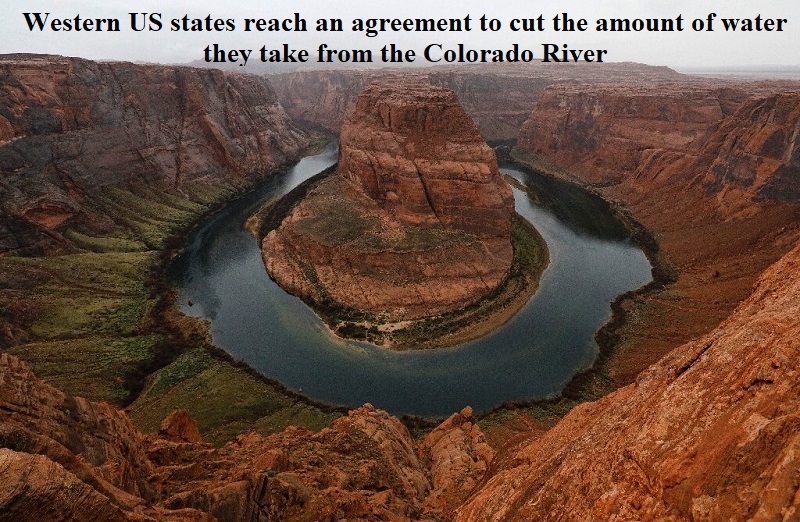
On Monday, Western US states announced an agreement to reduce their water consumption from the Colorado River due to prolonged drought and worsening climate conditions over the past 25 years. The Colorado River flows through seven US states and Mexico. Under the deal brokered by the Joe Biden administration, Arizona, California, and Nevada will collectively decrease their intake by 3 million acre-feet (3.7 billion cubic meters) until the end of 2026, which accounts for 13% of their river allotment.
To incentivize water conservation, the federal government will reportedly pay $1.2 billion to water districts, Native American Tribes, and cities in California, Nevada, and Arizona over the next three years. These three states form the Lower Basin of the Colorado River, while the Upper Basin includes Colorado, New Mexico, Utah, and Wyoming.
While the Upper Basin states draw water directly from the river and its tributaries, the Lower Basin states rely on Lake Mead, the reservoir created by the Hoover Dam.
This agreement follows years of contentious negotiations, with states reluctant to compromise despite the river’s critical condition. The deal also paves the way for a three-year plan to distribute water rights from 2024 onwards.
US President Joe Biden commended the agreement, emphasizing its importance in safeguarding the stability of the Colorado River System amid climate change and historic drought conditions. California Governor Gavin Newsom also praised the deal, highlighting the urgency of collaboration in addressing climate change-related challenges.
Looking ahead, the seven states will need to negotiate a longer-term agreement beginning in 2027, likely spanning two decades. This future deal will have to consider the uncertainties of climate change and cannot rely on favorable weather conditions or federal funding, as reported by Reuters.
The Colorado River Compact, established during a period of unusually high water availability, has posed challenges over time. The river’s resources have been strained by rapid population growth and a persistent drought that endangered reservoir levels, potentially disrupting downstream water supply and hydroelectric generation.

Post Your Comments